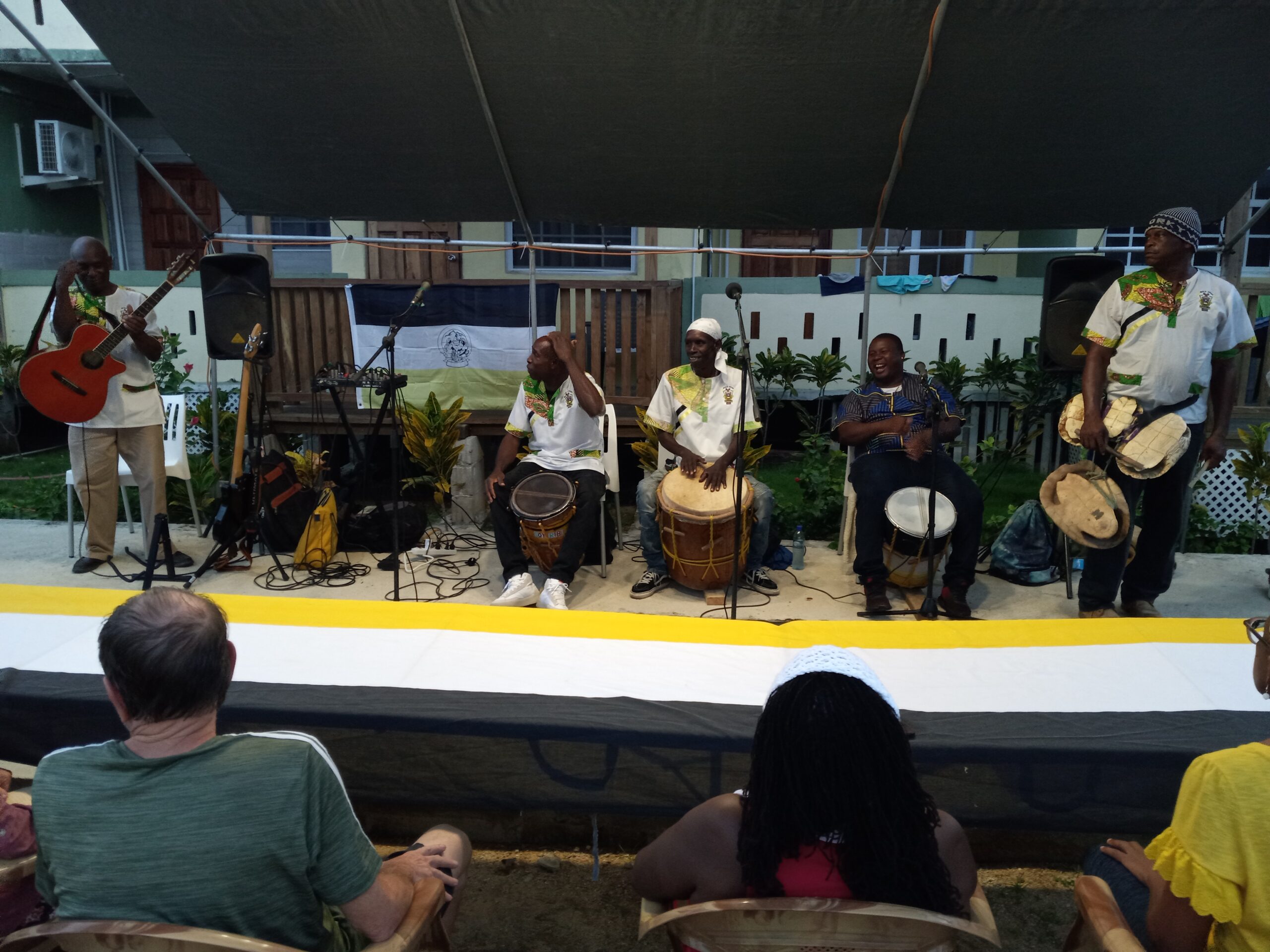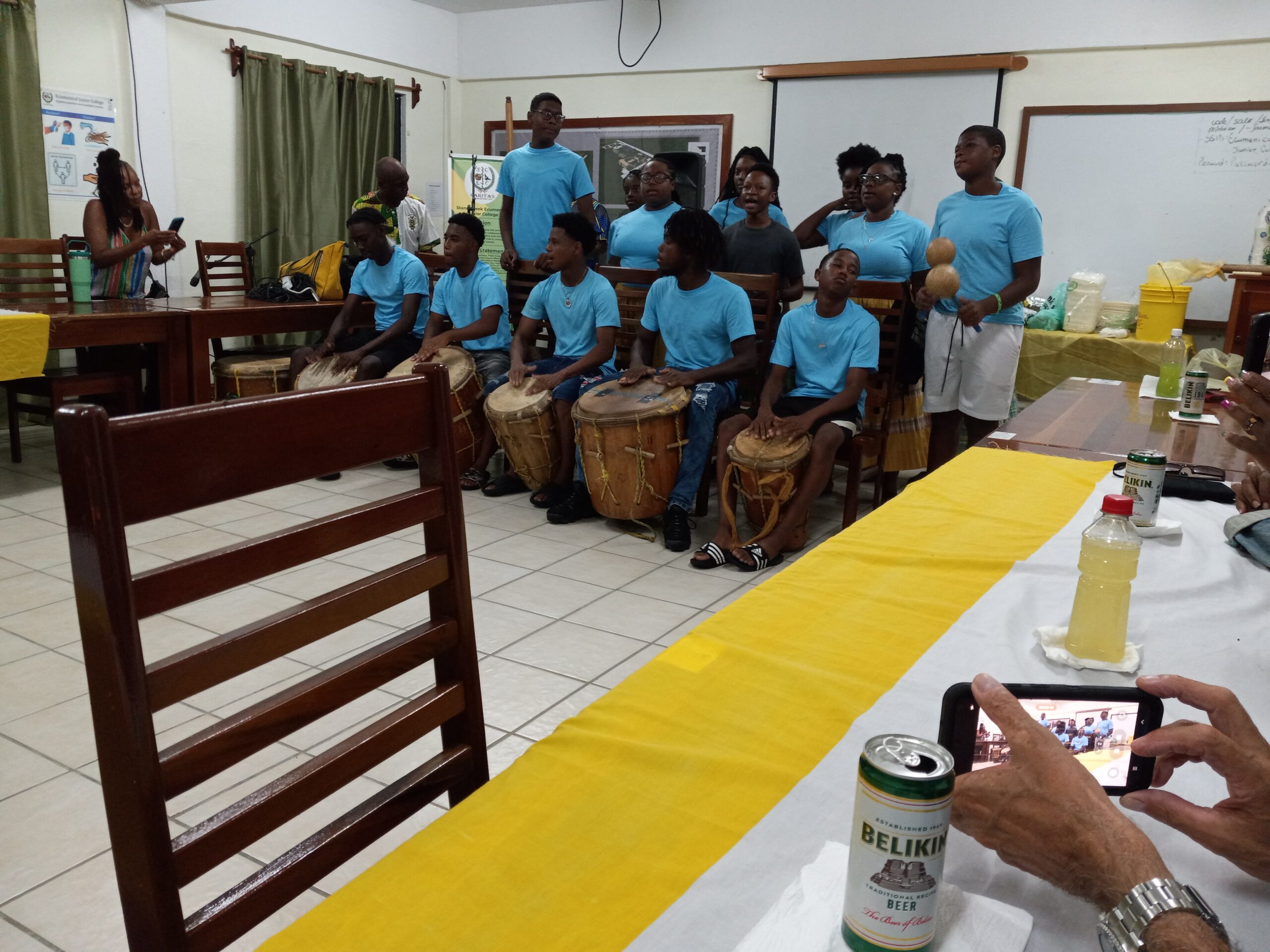Editor’s Note: This is Part 5 of a series by Olasee Davis on the St. Croix Hiking Association’s recent trip to Belize. Read Part 1 here, Part 2 here, Part 3 here, and Part 4 here.

Members of the St. Croix Hiking Association were off again, this time to visit St. Herman’s Blue Hole National Park. It was a long drive from Dangriga to the beautiful landscape of the Karst Mountains of Belize. This range resembles the Alps in Europe, especially in France, with its limestone cliffs of hanging vines, underground streams, rivers and lush tropical forests.

The park is over 500 acres of land that contains two cave systems, Crystal and St. Herman’s, with various hiking trails and a cool tropical rainforest pool from which the park gets its name. However, the inland pool of St. Herman’s Blue Hole should not be confused with the offshore Great Blue Hole of Belize. The national park has many options to choose from such as bird-watching, with more than 200 species of birds, exploring caves, several hiking trails, river tubing, and swimming in the inland Blue Hole.
The adventurous hikers went river tubing through the cave’s pitch-dark environment with headlights on their heads. St. Herman’s cave is cool inside due to the rock formation of limestones. Limestone caves are usually cooler when outside temperatures are hot or warmer. Other hikers, like myself, explored the cave on foot. As we entered, it was cool and with our flashlights we were able to see the different formations of carbonate rock (limestone), and the weathering process of minerals for thousands of years.
On this day, however, we had to put on insect repellant due to the intense presence of mosquitos. At that time of the year, mosquitos are out to get your blood due to the rainy season. The highlight for many of the hikers was the Blue Hole swim. That day, as we visited the Blue Hole, it was not blue due to rain for several weeks, which interferes with the coloring of the pool. Nevertheless, the hikers enjoyed the cool or cold water, with the tropical rainforest surrounding the pool.
Believe me, the inland Blue Hole is an ideal place to swim, with its depth of 100 feet, and being 300 feet in diameter. It was formed by the collapse of an underground limestone cave thousands of years ago. Part of that collapse is a river flowing through the cave, forming a sapphire-colored pool, thus creating a sinkhole. I was told the water of the Blue Hole has healing mineral properties. The park is managed by the Belize Audubon Society.

Our highlight of the day, I believe, was the evening back at the hotel when we met the Garifuna people. That evening, we were entertained by their music, oral history, and tasting their traditional cuisine. To understand who the Garifuna are, I will mention a very brief history of them. Their history is very complex. One history is oral while the other is a colonial narrative in historical books or literature, according to my friend in Belize, Augustine Flores, who himself is a Garifuna descendant.
In the 18th century, the Garifuna people arrived in Belize. The descendants of the Garifuna were West Africans who liberated themselves from bondage after being held captive as slaves on a Spanish slave ship that wrecked off the coast of St. Vincent, West Indies in the 1600s. They escaped the slave ship and landed on the island of St. Vincent. Once on the island, they intermarried with the indigenous population known as Kalinago or “Island Caribs.” This resulted in a history known as the “Black Caribs.”
According to historian Lennox Honychurch, “the origin of the term garifuna which is what the ‘Black Caribs’ of Belize call themselves,” the Garifuna resisted the French and British plantation slave system practices through decades of wars. One great leader of the Black Caribs (Garifuna) was Chief Joseph Chatoyer. On March 14, 1795, he was killed by the British during the second war. The Black Caribs or the Garifuna were never enslaved by European colonizers. The island of St. Vincent was a haven for runaway slaves known as maroons during the colonial period of the West Indies and South, Central and North America.
In 1796 or 1797, the Black Caribs (Garifuna) held out against the British until thousands of them were forced out or deported from St. Vincent to the coast of Central America. As a result, Garifuna communities were established along the coastal region of Central America in such places as Roatan, an island off the coast of Honduras, Guatemala, and Belize. In 1995, I met the Garifuna when I was in Honduras attending an agricultural conference.
Today in Belize, the predominant communities of Garifuna can be found in Hopkins, Punta Gorda, Barranco, Dangriga, Seine Bight, Libertad, and Georgetown. At Pals On The Beach hotel, in an outdoor setting, the Garifuna played their traditional music for us. We asked questions about their instruments and what each of the songs meant. There was one player whose instrument was multiple turtle shells, linked on a frame, which we found very interesting.

As soon as we begin to enjoy ourselves listening to the traditional music of the Garifuna, the sky lit up with lightning, dark clouds, thunderstorms and rain. The program was outside under a tent next to the hotel. We ended up at a junior college in Dangriga where the program continued. At the college, the young Garifuna joined us where they danced and played music, especially to the drumming of traditional drums. We were all very impressed with the young people’s performance that one of our members of the hiking association, Theresa Collingwood, CPA, of Collingwood & Associates PC from St. Croix, donated $500 from the company to them.

With that initiation from Theresa, other members of the hiking association donated money, and the total donation came up to $2,320 BZE ($1,1600 U.S.). We also learned the oral history of the Garifuna through a question-and-answer period of the program. At the junior college, the members of the hiking association were served Garifuna traditional food. One of the main dishes is called hudut. It is a coconut-based fish soup that was served with mashed plantains and a boiled egg. We were also served a drink made of cassava and coconut milk mix.
Believe me, when you think about it, the Garifuna main food crops such as banana, plantain, cassava, yam, as well as a variety of seafood is no different to what we eat in the Caribbean region. The bottom line is, we are one people culturally and historically. We left there that night feeling good about ourselves, the experiences we had, and ready for the next day’s adventure on foot.
— Olasee Davis is a bush professor who lectures and writes about the culture, history, ecology and environment of the Virgin Islands when he is not leading hiking tours of the wild places and spaces of St. Croix and beyond.










